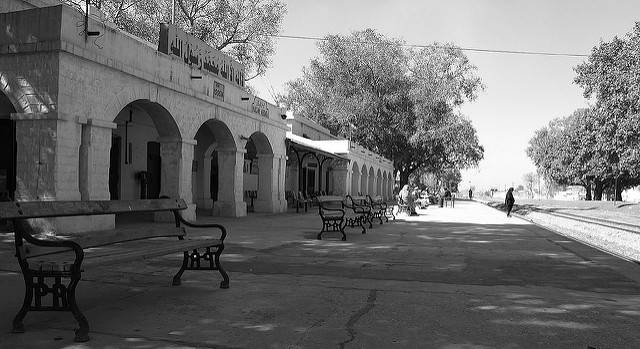I have received a WhatsApp message containing two photographs of Hasan Abdal Railway Station with its century old trees and old ‘Raj’ era architecture. In my search for stories, I have travelled much, visited old ‘dak bungalows’ and railway stations, forest rest houses and derelict monuments honoring some remote administrator of days gone by. Hasan Abdal Railway Station is one of those spots that has regretfully been missed.
I had the honor of being befriended by the doyen amongst broadcasters – the late Obedullah Beg or OB as we called him. We synched on our first meeting more than three decades ago, since we shared the same likes and dislikes – history, trekking, the outdoors, nature, ‘Mash’ lentils (which OB referred to by the original name – ‘Muqashar o Biryan’) and Shami Kebabs. This unique individual usually stayed with me whenever in Islamabad and we could often be seen exploring interesting spots together. It was a wet monsoon morning, when I took him deep into the Margallas to Makhnial and its 1924 vintage Forest Rest House. A fifteen minutes’ drive from Pir Sohawa, this beautiful place with its verdant pine covered slopes, cool invigorating climate and frequent mists, has been my favorite retreat from the stresses of everyday life. The rest house itself is a two bedroom stone structure with a sitting cum dining room, fronted by a verandah that opens into a lawn. This lawn is perched on the edge of a steep ridge that gives an unrestricted view of two lovely Hazara valleys. Makhnial is a wide almost flat saddle, sporting a two shop bazaar and the local residence of a high profile local political figure. Elsewhere in the world, the place would have been developed into thriving hill resort that would have been ideal for residents of the Federal Capital and domestic tourism.
Another unforgettable spot nestles amongst the hills some kilometers ahead of Shinkiari. Dhadar Forest Rest House is accessible through a narrow metaled road that exits along the right bank of the Siran River, where it cuts across the Karakorum Highway. The building is hidden from view by a dense growth of pines, cedar, ‘chinar’ and walnut trees - with an odd ‘shah baloot’ thrown in for good measure. Water for cooking and washing was (and perhaps still is) obtained from a hand pump in the front lawn and electricity was so inconsistent that we were happy to make do with hurricane lanterns. The building had been constructed somewhere in the early 1900s with a detached kitchen connected to the main structure by a covered walk way. The old caretaker appeared to be a pre independence relic and the time capsule effect was enhanced, when we were offered boiled rice with chicken curry for lunch and dinner. All said and done the rest house was falling apart in spite of its history and idyllic location, underlining the fact that this was a piece of history needing to be preserved.
Rawalpindi is full of old structures with their ornate balconies, stained glass windows and frescoes. It pains me, when I see the hammer and pick at work on these buildings in a bid by greedy owners, with no love of heritage and history, to replace them with ugly glass fronted plazas.
We have already lost much of our past as the modern concrete jungle invades the graceful and beautiful buildings of the last century. The dazzling white columned Civil and Military Gazette building, with its historic plaque saying that Noble Laureate Rudyard Kipling once worked here as assistant editor, was torn down and replaced by a shopping center. The same thing happened to ‘Raj’ era bungalows with their arches, deep verandahs and expansive compounds. At least, some of these should have been declared as heritage buildings (for like it or not - the two hundred years of colonial rule is part of our history).
Such is our level of insensitivity that we have destroyed monuments dating back to Mughal times. I explored a mausoleum reputed to be that of a celebrated nobleman in the Emperor’s Court, in the early nineteen sixties. I was unable to revisit the spot in a recent trip to Lahore since the access road had been blocked by illegal construction and the historic structure itself had been vandalised.
It is an established fact that nations, who don’t take pride in their history, no matter how unpalatable it may be, are liable to destroy themselves. One manifestation of this pride is preservation of archeological heritage. Regretfully, we have not proved equal to the task.






